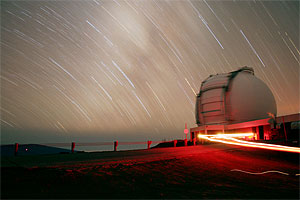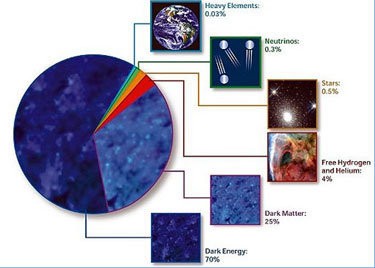 Half hour exposure of star trails
Half hour exposure of star trails
above the Keck Telescopes taken by yours trulyThe dark matter that I discussed in my last post is quite bizarre, but makes up only a small fraction of the universe. The dominant material in the universe actually appears to be some kind of "dark energy".
Since no one has any idea what dark energy actually is, I can't really write a whole lot about it. All I can say is that something is out there, and it’s really weird.
Dark energy presents itself to us as a mysterious force, counteracting gravity over enormous cosmological distances. The effects of this force were first observed through observations of very distant supernovae.
Given the right conditions (any idea what these conditions may be?), an old star can explode as a supernova. The explosion is so bright that it can be seen from across the universe. All of these explosions are very similar, enabling us to estimate the distance to the supernova from its apparent brightness.
Observations of supernovae are used to measure the rate at which space is expanding. Measurements show that supernovae are much fainter than expected. It appears that there must be a new force at work, caused by a previously unknown material. We call this material dark energy.

 As this NASA chart indicates,
As this NASA chart indicates,